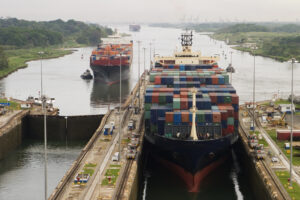
Starting from 30 July 2023, the daily transit capacity of the Panama Canal will be adjusted to an average of 32 ocean-going vessels per day, with 10 vessels in the neo-panamax locks and 22 vessels in the Panamax locks.
The maximum sustainable capacity of the Panama Canal, including both the Panamax and expanded neo-panamax locks, is approximately 38-40 vessels per day, but generally around 34-38 vessels transit each day. However, the two most recent months, May and June, saw an average of only 32.58 and 32.13 transits per day, respectively.
Canal capacity may be further adjusted based on factors such as Gatun Lake level, weather forecasts, and vessel mix.
The ACP has already implemented a series of draught restrictions for the waterway, limiting the amount of cargo ships can carry.
A draught of 13.41 metres is maintained for the next several months, as long as weather conditions do not vary significantly from current projections.
The arrival of rains in late June had enabled the authority to postpone further draught reductions to 13.26 metres (43.5 ft) on 25 June and to 13.11 metres (43 ft) from 19 July. The maximum draught offered by the canal expansion is 15.24 metres (50 ft) in normal conditions.
The Panama Canal Authority said it was implementing the measures to avoid additional draught restrictions due to extended dry conditions in the Panama Canal watershed, despite water saving measures and the arrival of the rainy season.
This year’s El Niño has resulted in drier than normal conditions in Panama, intensifying the drought and leading to lower water levels in Gatun Lake.
This transit limit is the first climate-related restriction has been put in place since the opening of the expanded Panama Canal’s neo-panamax locks in 2016. The ACP’s announcement added that it reserves the right to implement additional measures and procedures in the future to ensure the safe and efficient operation of the waterway.
The ACP also notes that a decrease in daily transits of the Panama Canal for an extended period will lead to longer waiting times for vessels without reservations. “In that regard, we strongly encourage all customers to make use of our Transit Reservation System to reduce the possibility of extensive delays,” it said.